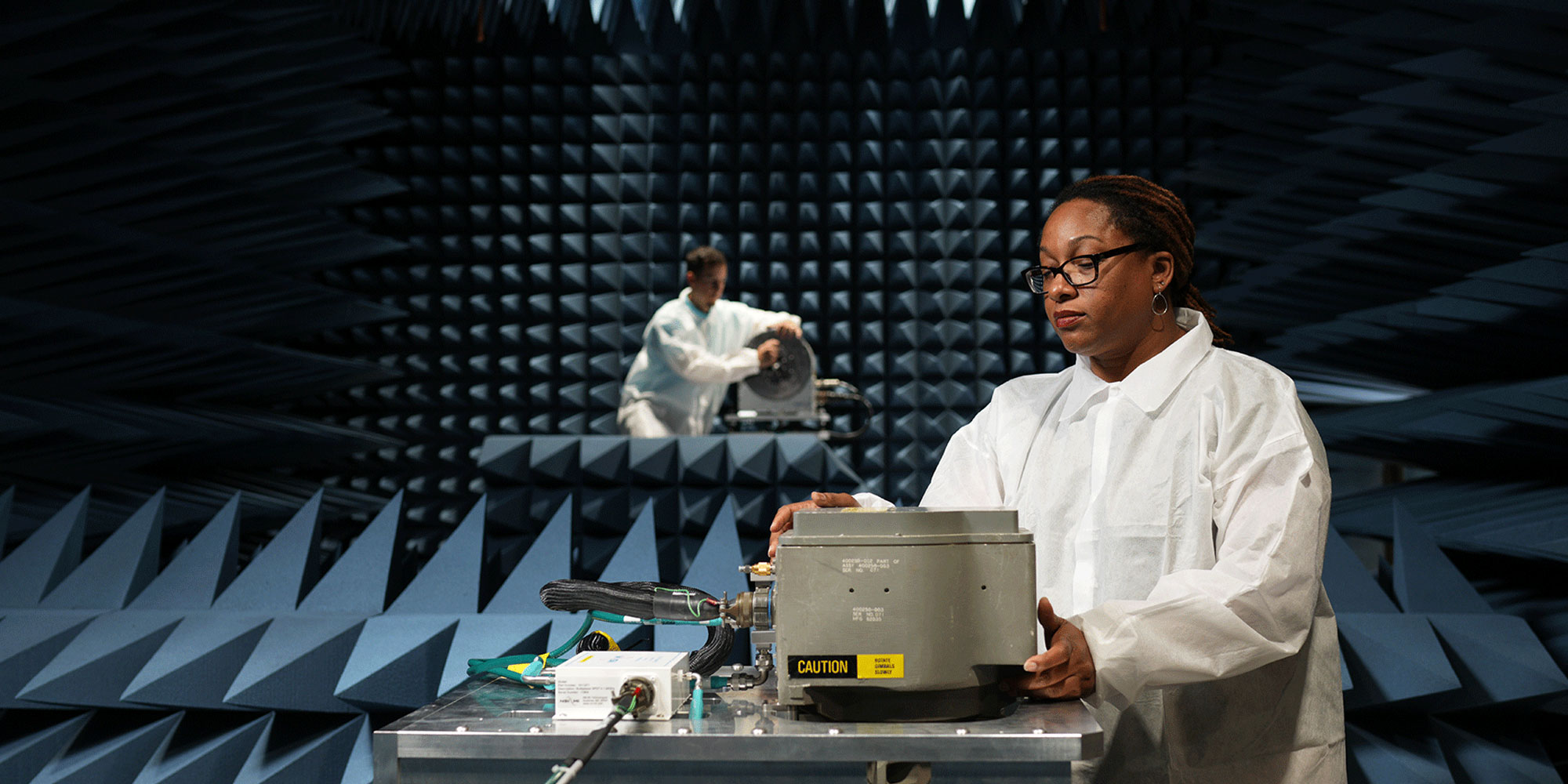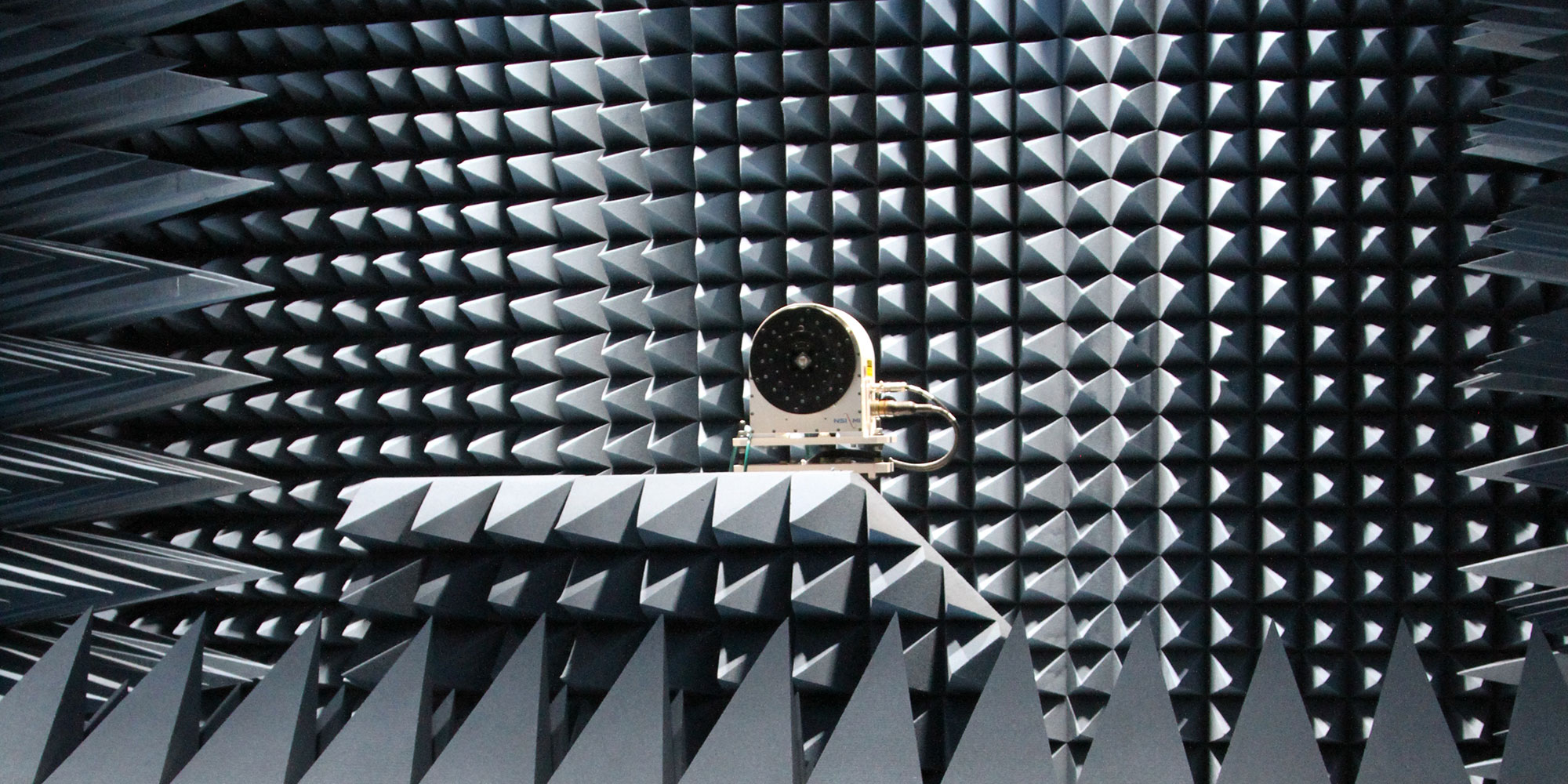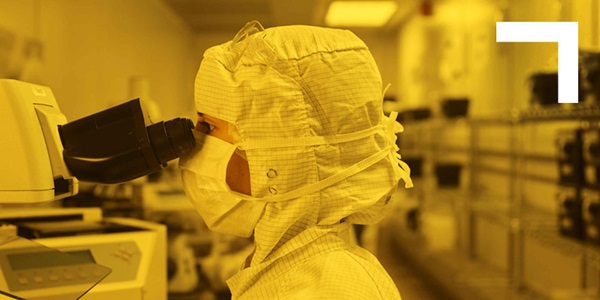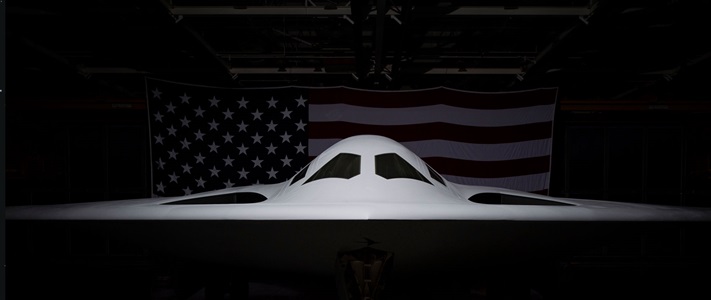One of the Quietest Places on Earth
A Silent Testing Chamber to Improve Radar

By Adam Stone
The world is becoming increasingly cluttered by radio frequencies from wireless devices, making testing radars a challenge. To ensure radars are going to perform as needed, engineers need a space that eliminates radio interference.
Such places, called anechoic chambers, exist. But none were quite right to test Northrop Grumman’s ultra-sophisticated APN-241 radar. So, we built our own.
Our Warner Robins, Georgia, facility is now home to a specialized anechoic chamber that adds the capability to perform near and far-field antenna testing that previously had to be outsourced.
Why the Silent Treatment?
"An anechoic chamber is essentially a large room with echo-absorbing material inside it," said Jon Teregeyo, Northrop Grumman’s principal project manager on the program. "You can transmit and receive radar signals inside this room with no interference, which allows us to do some very fine, detailed testing on these radar systems."
This matters because when it comes to radio frequency (RF), the air around us has become very noisy. "You've got cell phones, Wi-Fi — all these signals that can interfere with a radio test," said Joel Conrad, chief engineer and lead technical expert on the program. "You need that very quiet radio space to ensure your test results aren't impacted by all those external environmental factors."
A Unique Solution
The new chamber is specially configured to support both compact and far-field testing, something few other testing chambers can achieve. Achieving that cost-effective, dual-use outcome required considerable engineering expertise.
It takes a specialized skill set not just to devise such a system but to ensure its smooth operation. "There's a lot of technical proficiency that's required to perform both near- and far-field tests," Teregeyo said.
Northrop Grumman's new chamber is distinctly suited to meet another key need for the military. As a classified facility, it will make onboarding the new radars significantly faster and most cost-effective.
"Prior to this, some limited testing could be done in Atlanta, but that process was both time-consuming and labor-intensive," said Thurman "T.R." Burke, manager of product support engineering. "They had to travel from Warner Robins to one of the suburbs of Atlanta. For every radar, they had to carry it up there, set it up there, run the test and then bring it back down here. There's a lot of cost involved with that — and a lot of time."
With the long- and short-range tests now housed together in a secure, classified facility, customers will trim that expense and be more readily able to field the new, repaired, or upgraded equipment.

A Problem Solved
This innovative facility will help the military overcome significant logistical hurdles as it moves to deploy the new radars.
"We produce hundreds of these units, and we're sustaining these radars for various international customers," Teregeyo said. "With outsourcing, we would only have a testing window of several days to a couple of weeks, and scheduling proved to be unreliable. Schedules would shift; sometimes, testing windows were canceled."
By bringing the effort in-house, Northrop Grumman teams can control the timing and more effectively meet the needs of their customers. With that expanded capability, the team will be able to look beyond quality assurance, leveraging its testing apparatus to deliver an optimized radar solution for the military.
Our anechoic chamber is truly something special. Quite possibly, we have built one of the quietest places on planet Earth.
More Innovation Stories
Read all stories about advanced technology and innovation


